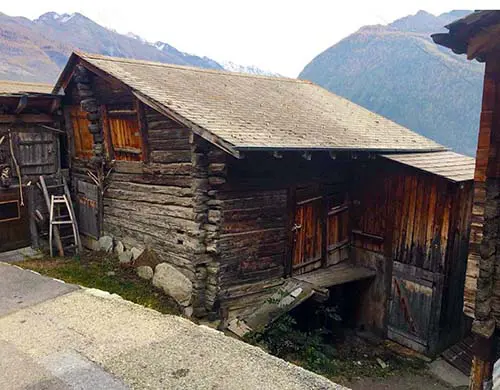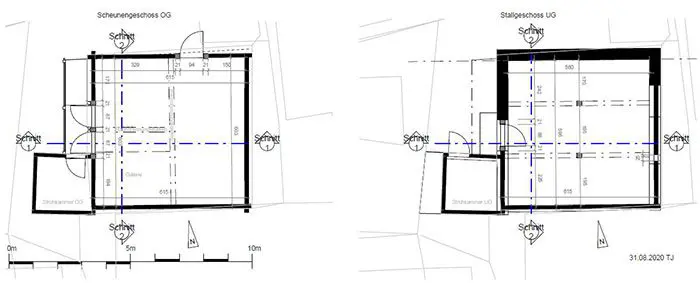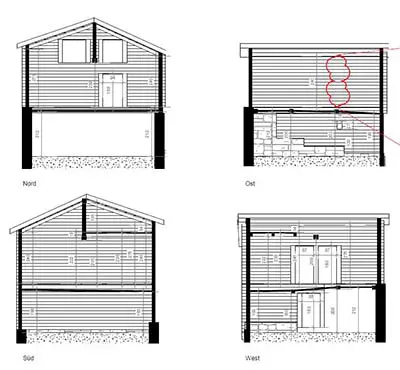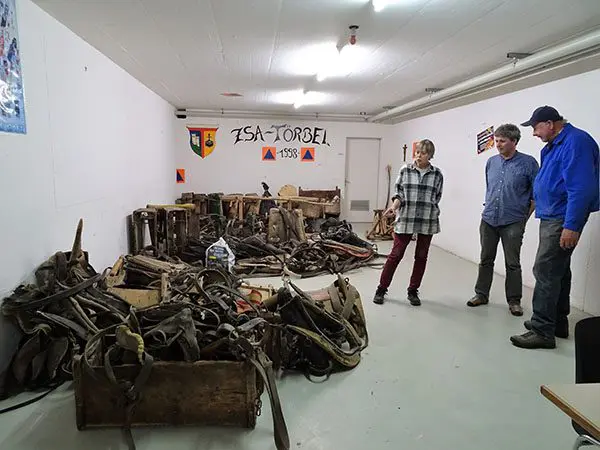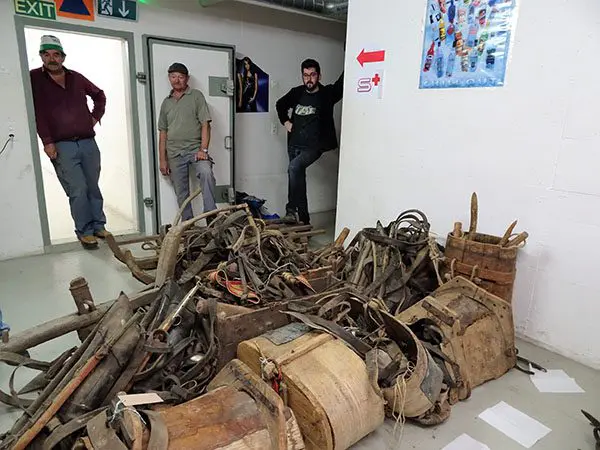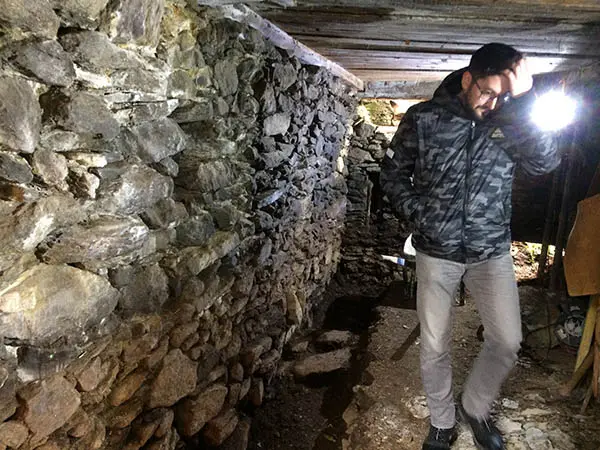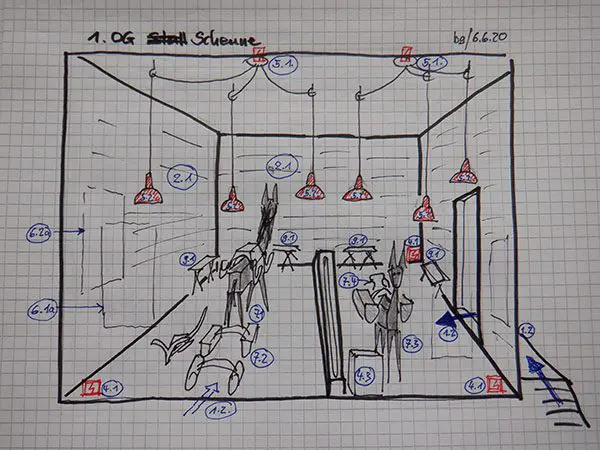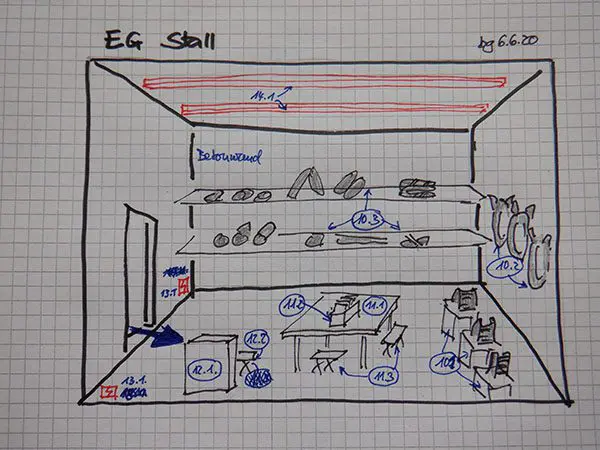BONNIE SHIELDS: A Legacy of Loving Longears
By Meredith Hodges
“You have to be crazy to draw mules!” At least that was a popular opinion, but one Bonnie Shields chose to ignore. “I love mules. That’s why I draw ‘em.” It’s as simple as that. Born and raised in Southern Indiana, Bonnie wasn’t around mules until she moved to Tennessee in 1965. But, the meeting has proven to be remarkable. A longstanding member of the Cowboy Cartoonists Association, her wide variety of “mule art” can be viewed at numerous venues: mule and draft horse shows, Western arts and crafts shows, Western trade shows and on the internet at her website at www.Bonnieshields.com. Her talents include drawing, painting and sculpture. She has done a wide variety from ink  drawings to acrylic painting to bronze sculpture, from commissioned work to originals, all revering the mule. She has also written a multitude of articles for such publications as The Brayer, a bimonthly publication put out by the American Donkey & Mule Society, Mules and More Magazine, Western Mule Magazine and the Bishop Mule Days program.
drawings to acrylic painting to bronze sculpture, from commissioned work to originals, all revering the mule. She has also written a multitude of articles for such publications as The Brayer, a bimonthly publication put out by the American Donkey & Mule Society, Mules and More Magazine, Western Mule Magazine and the Bishop Mule Days program.
Bonnie Shields has been my friend and illustrator for over forty years! I became a fan even before I met her when I bought one of her many mule-team portraits. I truly admired her attention to detail. Even animals are as different in their faces and bodies as we are, and she captures those details with artistic precision! Instantly, I became an avid and devoted fan of all things Bonnie Shields! I was completely thrilled when we actually encountered each other with this common bond at Bishop Mule Days in 1981! A happier, funnier, kinder person that anyone could ever meet…that was Bonnie Shields! Two women, intensively afflicted with terminal “Mule Fever,” THOSE were Bonnie Shields and Meredith Hodges! Our friendship was instant and has been a long-lasting journey, and a legacy of loving Longears!
Bonnie Shields’ art is diverse and completely enrapturing. In the numerous portraits she does, you can really tell just who you are looking at whether it is mules, other animals or human “characters!” Her love and attention to detail is in every piece of her art whatever the medium she chooses: illustrations, sculpture, water colors, acrylic paintings or pencil drawings. Her sculpture is always anatomically correct. I commissioned Bonnie to do two life-sized pieces of bronze sculpture for me. The first was of my Sire Supreme, Little Jack Horner, jumping over a four-foot brick wall. The piece was dubbed “A Leap of Faith” because he had to have faith in me and I had to have faith in him that a donkey could actually accomplish this daring feat. During JASPER CELEBRATION DAY in 2005, when we launched our Jasper The Mule children’s book series, this life-sized bronze was the first piece of life-sized sculpture to grace the grounds in the South Park of the LOVELAND LONGEARS MUSEUM & SCULPTURE PARK at the Lucky Three Ranch!
 Bonnie’s second contribution to the LOVELAND LONGEARS MUSEUM & SCULPTURE PARK at Lucky Three Ranch, titled “Friends,” was a depiction of the three main characters in the Jasper the Mule children’s series: Kylie, Moxie and Jasper. This sculpture was strategically placed at the entrance to the North Barn where the Champion Mules of the Lucky Three Ranch were housed. The people on our tours are always captivated, and smile broadly, when they spot these animated characters exhibited in bronze! Bonnie was my illustrator for the Jasper the Mule series, so we both did a book signing tour together for the launch of the first book that included: Nashville, Dallas (Children’s Hospital and several TV & Radio appearances, and book signings), National Finals Rodeo in Las Vegas and Los Angeles. Those were exciting times!
Bonnie’s second contribution to the LOVELAND LONGEARS MUSEUM & SCULPTURE PARK at Lucky Three Ranch, titled “Friends,” was a depiction of the three main characters in the Jasper the Mule children’s series: Kylie, Moxie and Jasper. This sculpture was strategically placed at the entrance to the North Barn where the Champion Mules of the Lucky Three Ranch were housed. The people on our tours are always captivated, and smile broadly, when they spot these animated characters exhibited in bronze! Bonnie was my illustrator for the Jasper the Mule series, so we both did a book signing tour together for the launch of the first book that included: Nashville, Dallas (Children’s Hospital and several TV & Radio appearances, and book signings), National Finals Rodeo in Las Vegas and Los Angeles. Those were exciting times!
 Bonnie’s sense of humor is unique and infectious! Mules and More Magazinepublished her stories, mostly involving mules and their appearance in history with their human counterparts. They were always lively and entertaining! What is certain to end in disaster, usually takes you on a long journey that ultimately results in compromise and wide grins. Of course, this is what living with Longears is all about. Either you have a good sense of humor and enjoy the ride, or you DON’T. If you don’t, the joke’s on you! With each individual mule owner, the stories are different, but our introductions to Longears are basically the same. Most humans are not always ready for the pranks of their mules and donkeys! This is the source of Bonnie’s amazing sense of humor with her numerous cartoons and whimsical paintings. Bonnie did a classic painting just for me titled, “I Don’t Know…Maybe I’m Overorganized!” She sure knows me well! Even her way of spelling words adds to the charm of her work. For instance, “sure,” she spells “shure!” My mother once told me I should help her with her spelling. I told her that even Bonnie’s spelling was unique about Bonnie! It is all about “Artistic License!” Then my mother asked if she ever got dressed up when she went OUT? I replied, “Of course! She wears her WHITE overalls for those kinds of events! She DID get some pretty snazzy BLACK overalls from the Draft Horse Club for ‘Black Tie’ events!”
Bonnie’s sense of humor is unique and infectious! Mules and More Magazinepublished her stories, mostly involving mules and their appearance in history with their human counterparts. They were always lively and entertaining! What is certain to end in disaster, usually takes you on a long journey that ultimately results in compromise and wide grins. Of course, this is what living with Longears is all about. Either you have a good sense of humor and enjoy the ride, or you DON’T. If you don’t, the joke’s on you! With each individual mule owner, the stories are different, but our introductions to Longears are basically the same. Most humans are not always ready for the pranks of their mules and donkeys! This is the source of Bonnie’s amazing sense of humor with her numerous cartoons and whimsical paintings. Bonnie did a classic painting just for me titled, “I Don’t Know…Maybe I’m Overorganized!” She sure knows me well! Even her way of spelling words adds to the charm of her work. For instance, “sure,” she spells “shure!” My mother once told me I should help her with her spelling. I told her that even Bonnie’s spelling was unique about Bonnie! It is all about “Artistic License!” Then my mother asked if she ever got dressed up when she went OUT? I replied, “Of course! She wears her WHITE overalls for those kinds of events! She DID get some pretty snazzy BLACK overalls from the Draft Horse Club for ‘Black Tie’ events!”
Many of Bonnie’s humorous paintings are a mixture of adverse situations, general chaos and the humor that is found in lieu of anger in her Western montages. At a loss for words, there is nothing you can do but stare and then quietly giggle to yourself! Her rendition of Caboose, Kansas, titled “PEW,” is one of those that could engage you for HOURS! It is one  of many works of art that we proudly display at the LOVELAND LONGEARS MUSEUM & SCULPTURE PARK at Lucky Three Ranch! As her biggest fan, my Bonnie Shields Gallery is quite extensive!
of many works of art that we proudly display at the LOVELAND LONGEARS MUSEUM & SCULPTURE PARK at Lucky Three Ranch! As her biggest fan, my Bonnie Shields Gallery is quite extensive!
Bonnie’s art is diverse, widespread and is on display in a vast number of mediums. She has numerous ceramic statues, small bronzes, painted wooden statues and painted bronzes. During her career, she has attended a wide variety of Trade Shows across our country to display and sell T-shirts, greeting cards, calendars, jewelry, originals, prints and books that she has illustrated. Although Bonnie is now limiting attendance to only her favorite trade shows close to home, she is still getting requests to illustrate books and do interviews about her work. Bonnie has illustrated numerous books from a lot of different authors over her 50+ year career. Even the more serious books still have a “tinge” of humor and are certainly not without “character!” She and I have always been fans of author, Marguerite Henry (Misty of Chincoteague Treasury and much more). As a last request before she passed, Marguerite Henry asked Bonnie to illustrate her last book, Brown Sunshine of Sawdust Valley. This wonderful opportunity really touched Bonnie’s heart!  This book will live on as one of her greatest accomplishments.
This book will live on as one of her greatest accomplishments.
A lovely coffee table book, produced by Lucky Three Productions, L.L.C., is the most complete collection on record of Bonnie’s numerous artistic accomplishments. Longears lover or not, you will be amazed at the expansive diversity of her work and you will be amply entertained by her unmatched sense of humor! This is a MUST HAVE for any library!
It has been both an honor and a privilege to be asked to do this coffee table book all about my best friend, Bonnie Shields, the Tennessee Mule Artist! I am so glad that I kept everything she ever gave to me over the years and acquired such an extensive collection of her work. Doing this book to immortalize the career of my favorite half-assed artist was truly a labor of LOVE! She really DOES have a Legacy of Loving Longears!
To learn more about Meredith Hodges and her comprehensive all-breed equine training program, visit LuckyThreeRanch.com, MEREDITH HODGES PUBLIC FIGURE Facebook page, or call 1-800-816-7566. Check out her children’s website at JasperTheMule.com. Also, find Meredith on Pinterest, Instagram, MeWe, YouTube and Twitter.
Covered in the JASPER THE MULE children’s series of books and videos at www.luckythreeranchstore.com or at www.JasperTheMule.com.
© 2022, 2024 Lucky Three Ranch, Inc. All Rights Reserved.
For more information about BONNIE SHIELDS new book, contact www.bonnieshields.com, (208) 263-6534 or www.luckythreeranchstore.com , (970 816-7566)



